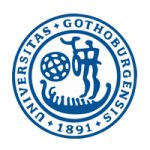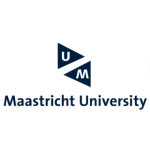项目介绍
Lund University was founded in 1666 and is repeatedly ranked among the world’s top universities. The University has around 47 000 students and more than 8 800 staff based in Lund, Helsingborg and Malmö. We are united in our efforts to understand, explain and improve our world and the human condition.
Lund University welcomes applicants with diverse backgrounds and experiences. We regard gender equality and diversity as a strength and an asset.
Description of the AMBER project context
This post-doctoral position is part of the EU cofund research project AMBER, Advanced Multiscale Biological imaging using European Research infrastructures, will address scientific and sectoral gaps in biological imaging ranging from molecular, through cellular, to tissue, organ and organism levels of organisation, and is coordinated by LINXS Institute of advanced Neutron and X-ray Science.
AMBER is funded by the EU Marie Skłodowska-Curie (MSCA) COFUND scheme.
Around 15 postdocs will be recruited in the Second call 2024, with each fellowship lasting 36 months.
AMBER has six core partners: Lund University/MAX IV, Sweden, the European Spallation Source (ESS), Sweden, the European Molecular Biology Laboratory (EMBL), Institut Laue-Langevin (ILL), France, the International Institute of Molecular Mechanisms and Machines, (IMOL), Poland, and the Leicester Institute of Structural and Chemical Biology, United Kingdom.
Your work may include clinical and biomedical projects. It may also include technique development work aimed at combining imaging techniques and data analysis to provide a more integrated picture of life processes in the context of health and disease. To be a postdoc fellow at the AMBER programme you will get unprecedented medical, biological, and methodological capabilities, with a profound potential impact for Europe’s next generation of research and researchers. When you have completed the AMBER programme you will be extraordinarily well equipped to further your career in academia, at infrastructures, in the health and MedTech sectors, and beyond.
For more information about the total announced post-doctoral positions within in the AMBER co-fund project please visit the AMBER Cofund website: AMBER Cofund jobs
The interviews will start in November. For more information about AMBER, application and evaluation process etc please visit the AMBER Cofund website: AMBER Cofund
Description of the workplace at the Department of Biomedical Engineering, Lund University
The Lund University position will take place at the Biomechanics group which is part of the Department of Biomedical Engineering. The interdisciplinary research is focused on understanding the link between mechanics and biology in the musculoskeletal system, including related pathologies and repair of skeletal tissues. Experimental tissue characterisation methods, imaging and computational simulation techniques are used. The research is applied on direct problems in orthopaedics to develop better methods to understand and improve repair of musculoskeletal tissues.
The group encompasses about 12-15 scientists (PhD students, post-docs, researchers) and is located at the BMC-building (Biomedical Center). The expertise includes computational and experimental mechanics of biological tissues, where a large part of the experimental work takes place at large scale facilities, using imaging, scattering and spectroscopy-based techniques. The group strives for an inclusive environment, largely based on collaboration and trust, where development towards an independent researcher is largely encouraged and supported.
The research is connected to the LTH profile area Engineering Health. More information can be found on the Biomechanics research group website: Biomechanics research group or through the Twitter channel: @Lund_BioMech.
Subject description – High resolution imaging of the bone-cartilage interface in the knee during osteoarthritis
The research within this project is focused on understanding the interface between the hard mineralized tissue and soft cartilage tissue in the knee. Osteoarthritis (OA) is a joint disease where the tissues degenerate, which affects their composition, microstructure and mechanical performance. It also affects the interface between the soft and hard tissue, where eg. Mineralization of cartilage occurs. The position is within a larger project that strives to understand the development of OA, in order to develop tools for better prediction of the onset and progression of osteoarthritis in the knee joint tissues.
The goal for the post-doc is to develop, perform and analyze data from high resolution synchrotron-based experiments of the interface tissues in the knee. Focus is on experiments where synchrotron-based tomography, scattering and spectroscopy-based methods are used to investigate the microstructure in cartilage, mineralized cartilage and subchondral bone. Also other imaging modalities can be used. The goal is to understand how cartilage mineralizes during OA, and possible connections to pain.
Work duties
The main duty of the post-doctoral position is to conduct research. Teaching may also be included, but up to no more than 20% of working hours. The position includes the opportunity for three weeks of training in higher education teaching and learning. The purpose of the position is to develop the independence as a researcher and to create the opportunity of further development.
The research duties will focus on developing, supporting, and analysing synchrotron-based experimental data, specifically from tomography, scattering and spectroscopy, to understand knee tissues during OA.
Detailed description of the work duties:
- You will be responsible for designing, planning, and performing experiments, including tomography, scattering and fluorescence spectroscopy.
- You will be responsible for designing, planning, and performing image analysis, including image correlation, specifically dealing with large amount of data.
- The project is a close collaboration with international partners, and you are expected to actively interact as a team member.
- You are expected to supervise MSc degree projects and assist in supervision of doctoral students.
- You are expected to support the group in seeking external research funding.
- You are expected to handle administration connected to the duties above.
Qualification requirements
Appointment to a post-doctoral position requires that the applicant has a PhD, or an international degree deemed equivalent to a PhD, within the subject of the position. The certificate proving the qualification requirement is met, must be received before the employment decision is made.
Additional requirements
- candidate needs to have a maximum 8 years after a doctoral degree (PhD), as required by the Commission, in accordance with the Horizon-Europe MSCA cofund project Grant Agreement
- at least one original publication in a peer-reviewed journal,
- a background in the relevant methods,
- a complete application package submitted through the AMBER portal (including CV and detailed research plan),
- strict compliance with the MSCA mobility rule that the researcher must not have resided or carried out his/her main activity (work, studies, etc.) in the host organisation’s country for more than twelve months in the three years immediately prior to the call deadline, and finally,
- very good oral and written proficiency in English.
Assessment criteria
This is a career development position primarily focused on research. The position is intended as an initial step in a career, and the assessment of the applicants will primarily be based on their research qualifications and potential as researchers. Particular emphasis will be placed on research skills within the subject.
For appointments to a post-doctoral position, the following shall form the assessment criteria:
- A good ability to develop and conduct high quality research.
- Teaching skills.
Other qualifications:
- A strong background in imaging and image analysis.
- Experience from synchrotron facilities, particularly with tomography, scattering or spectroscopy.
- Experience from biomechanics of musculoskeletal tissues.
- Experience with multidisciplinary environments and collaborative research projects.
- International networks and experience.
- Consideration will also be given to how the applicant’s experience and skills complement and strengthen ongoing research within the department, and how they stand to contribute to its future development.
We offer
Lund University is a public authority which means that employees get particular benefits, generous annual leave and an advantageous occupational pension scheme. Read more on the University website about being a Lund University employee Work at Lund University.
Further information
This is a full-time, fixed-term employment of three years. The period of employment is determined in accordance with the agreement “Avtal om tidsbegränsad anställning som postdoktor” (“Agreement on fixed-term employment as a post-doctoral fellow”).
How to apply
For more information and documents/templates/europass link, please visit the AMBER Cofund website: AMBER Cofund for applicants.
Incomplete applications will not be considered. Please make sure that you upload all the required documents specified below 1-9.
If you are interested in applying for more than one position (maximum 3) you must be prepared to make a full application for each individual position. When applying for this position at Lund University you need to create a PDF-file according to the instructions below. When you press the button “Login and apply” in this job advertisement you will reach the recruitment system Varbi where you finalize the application and attach your PDF-file.
Applications shall be written in English and all documents shall be in pdf format:
- A Curriculum Vitae (europass format). Your CV shall be exported to a PDF file that you use in your application.
- A detailed research plan including any foreseen secondments (candidates can suggest more than the mandated one, they can also suggest their own secondments), schools and conferences as well as a templated budget plan. (as concise as possible, recommended about 3-5 pages, but at an absolute maximum 10 pages. The research plan should include a half page of summary/abstract.
Additional texts to include in the PDF are:
- Letter of Commitment from any additional secondment partners the candidate wishes to bring onboard.
- Evidence of English proficiency (minimum CEFR B22, also checked at interview).
- A draft Individual Career Development Plan (ICDP).
- Two reference letters.
- Any additional documents to support the application.
- viii) Ethical questionnaire (HE ethics checklist + research ethics commitment)
In addition, the application will require:
- Any candidate can apply for maximum of 3 positions. You must apply for each individual position. A list with order of preference of positions should be sent to the AMBER management: amber@linxs.se
We are looking forward to receiving your application!
联系方式
电话: +46 (0)46 222 0000相关项目推荐
KD博士实时收录全球顶尖院校的博士项目,总有一个项目等着你!






